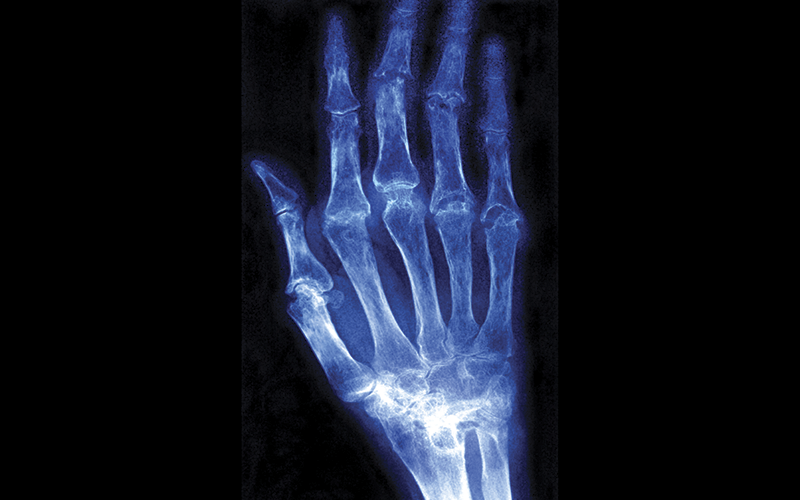By the time you read this, the hard copy of our Journal should have landed on your doormats. However, those of you who have visited this website will have already accessed and read some of the papers. The contents of the latest issue are as follows.

Blann A. British Journal of Biomedical Science in 2016: What have we learned?
This semi-review article simply and briefly summarises each of the 36 papers published last year, broken down into haematology, clinical chemistry, immunology, microbiology, virology, cell pathology and chromosome analysis. This article is the subject of a Journal-based learning assignment (see page 44) for those seeking to improve their continuing professional development profile.
Suresh Kumar Karri and A Sheela. Potential route of Th17/T reg cell dynamics in targeting type 1 diabetes and rheumatoid arthritis: an autoimmune disorder perspective
This review article focuses on the interactions between pro-inflammatory and anti-inflammatory cytokines, and how these influence and so regulate an immune response. An example of this is the interaction between IL17 and IL23 and certain T lymphocytes with regulatory and helper functions. Far from being merely academic, this informs our knowledge of the pathogenesis of autoimmune disease, so may provide new diagnostic/management opportunities.
Sarah J Pitt and Ian M Phillips. Diagnostic virology and patient care: from vaguely interesting to vitally important
In a second review, members of the virology advisory panel refresh and extend our knowledge of the most pathogenetically important viruses, these being hepatitis B and C, measles, HIV, respiratory syncytical virus, norovirus, papillomavirus and genital herpes simplex virus. Their article also describes the value of the laboratory in diagnosis, genetic techniques, point-of-care testing, and recent developments (e.g. Ebola).
J Limeres, JF Garcez, and colleagues. A breath ammonia analyser for monitoring patients with end-stage renal disease on haemodialysis
We should, in theory, excrete all our nitrogenous waste in urine and faeces. However, in certain pathological conditions, some (as ammonia) may be excreted via the lungs. Our Portuguese colleagues report their development of a method for determining ammonia in expired breath, and used it in a study of patients on dialysis. Perhaps unsurprisingly, breath ammonia correlated with blood urea, leading to the suggestion that this method may, in certain circumstances, be an alternative to standard serum biochemistry.
Saliha Rizvi, Syed Tasleem Raza, and colleagues. The relationship between Multidrug Resistance Protein 1(rs1045642) and Cholesterol 24 – hydroxylase (rs754203) genes polymorphism with type 2 diabetes mellitus
Although few would argue against a powerful role for being overweight and obesity in the development of type 2 diabetes, this alone does not account for all disease. Rizvi et al tested the hypothesis that two genes, Multidrug resistance 1 (whose function is clear) and CYP46A1 (linked to cytochrome P450) have a role in diabetes. Although the latter was linked to the disease, the former was not, leading to the speculation that measurement of polymorphisms in CYP46A1 may contribute to determining the risk of developing type 2 diabetes.
Manal A Safana, Nesreen G Elhalbawy, and colleagues. ABCB1 polymorphisms and steroid treatment in children with idiopathic nephrotic syndrome
A common treatment for nephrotic syndrome is steroids. However, responses vary from patient to patient for reasons that have, until recently, been unclear. One potential explanation is the effect of polymorphism in certain metabolic enzymes. This paper from Egypt found that one such polymorphism was modestly effective in determining responses to this drug, leading to the possibility that it may help direct treatment. If so, measurement of ABCB1 may enter routine practice.
Kanjaksha Ghosh, Kanchan Kumar Mishra, and colleagues. Assessment of semi-automated nucleic acid testing programme in a Regional Blood Transfusion Centre
Nuclei acid testing is a crucial part of screening donor blood for human immunodeficiency virus, and hepatitis B and C viruses, a luxury not always available to those on restricted budgets. Our colleagues from India report their experience of using PCR kits to develop a semi-automated viral detection system that improves cost-effectiveness in both high and low volume blood banks.
En C Funga, Sasala R Wickramasinghe, and colleagues. Hypophosphataemia and parenteral nutrition; biochemical monitoring, incidence and outcomes
Those who cannot obtain their nutrients via the digestive system must be fed intravenously by the process of parenteral nutrition. This report underlines the importance of measuring serum phosphates, as low levels are surprisingly common, and so should be checked regularly, perhaps daily, so that deficiencies can be detected and rectified.
One or more of these articles may be the subject of a Journal-based learning exercise for those seeking to improve their continuing professional development profile.
Andrew Blann Editor, British Journal of Biomedical Science
